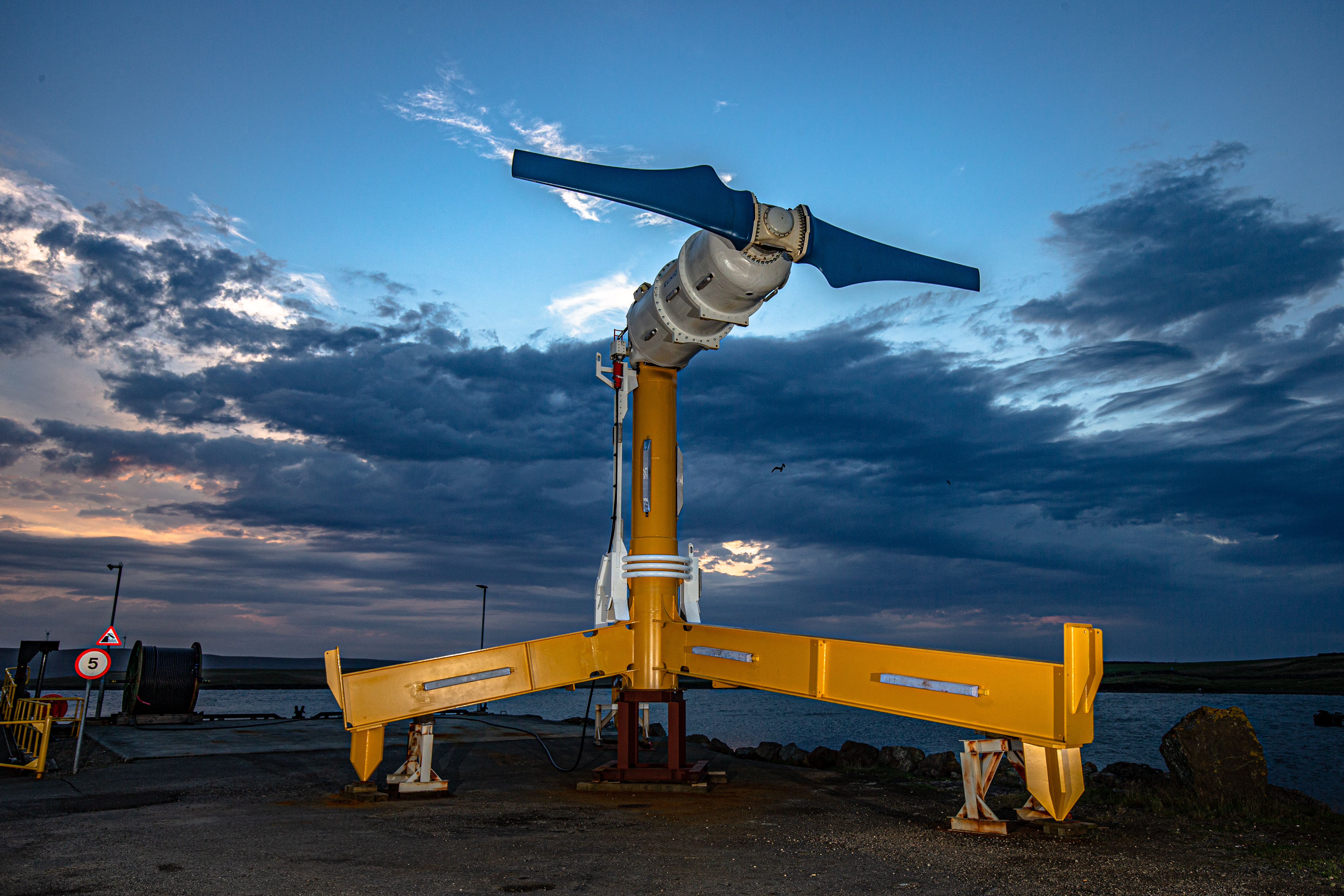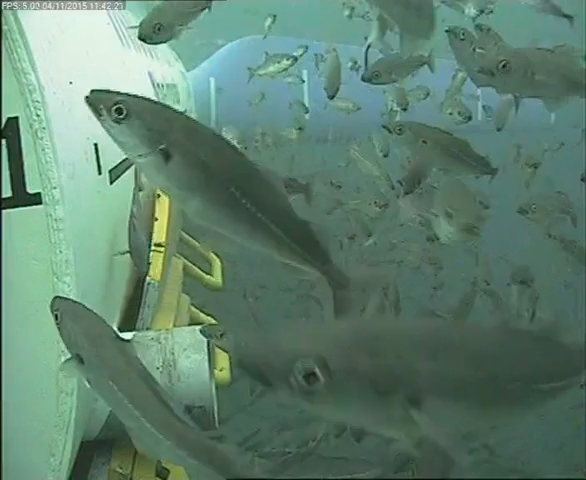Building on the success of Nova Innovation’s 6-turbine array in Shetland, Scotland, the ‘Sustainable European Advanced Subsea Tidal Array’ (SEASTAR) project will use Nova’s well-proven turbines to deliver a 4 MW tidal farm of 16 turbines. SEASTAR, located at the European Marine Energy Centre’s (EMEC) Fall of Warness tidal site in Orkney, Scotland, will be home to the largest number of tidal stream turbines ever deployed in a single location.
Jointly funded by the European Union’s Horizon Europe Programme and the UK Research Institute, the SEASTAR project launched in December 2023 and will be complete in February 2029. With Nova at the helm, the SEASTAR consortium has brought together 13 partners with expertise in the commercial, technical and environmental aspects of delivering a sustainable large-scale tidal stream array.
The overall mission of SEASTAR is to showcase the viability of a sustainable large-scale tidal energy farm. Key project objectives include:
- Delivering the tidal energy farm with the most turbines in a single location globally.
- Demonstrating increased insurability and bankability of tidal stream energy.
- Reducing the cost of tidal energy by a third.
- Mitigating environmental risks associated with future large-scale tidal farms globally.
All key learning from SEASTAR, including significant results and transferable knowledge, will be shared and communicated widely. Project partner Ocean Energy Europe will lead this dissemination effort with support from Nova, EMEC, and other project partners.
Sustainability is at the core of the SEASTAR project. From array design, to build and operation, SEASTAR aims to set the standard for the generation of clean energy, integrating sustainability principles into every aspect of the project, including:
- Technology Innovation: Demonstrating the feasibility and benefits of large-scale tidal energy generation.
- Environmental Responsibility: Minimising environmental impact by considering sustainability at every stage - from turbine design through to operation and maintenance. Environmental monitoring is carried out simultaneously to increase understanding of tidal energy on biodiversity.
- Clean Energy: Contributing to global efforts to reduce reliance on fossil fuels and transition to a low-carbon economy by lowering the cost of energy from the tides.
- Community Engagement: Actively involving local communities and stakeholders to ensure their needs and perspectives are integrated into the project.
- Strong Governance: Ensuring transparency in all project activities and decision-making processes.
A key aspect of demonstrating the sustainability of tidal energy is to address critical environmental evidence gaps and develop monitoring solutions for future tidal energy farms. SEASTAR will contribute through the design and implementation of rigorous environmental monitoring – gathering critical environmental data and knowledge to aid commercial scale tidal development.

The focus of the SEASTAR monitoring programme will be understanding collision risk, which continues to be the single greatest barrier to gaining consent for tidal stream projects globally. This will build on Nova’s ground-breaking monitoring at the Shetland Tidal Array, Scotland, where in 9 years, no collision events have been observed between the turbines and marine wildlife. The SEASTAR project will enable knowledge to progress from the effects of single devices and small arrays to larger arrays. This will be achieved using a variety of sensors, including turbine-mounted cameras and a Remote Observation Platform, equipped with optical cameras and an imaging sonar.
In addition to improving knowledge on collision risk, the SEASTAR monitoring programme will also improve the evidence base on the potential effects of disturbance or displacement, resulting from larger arrays of turbines. It will do this in part by measuring the noise generated by the turbines to build up a sound map of the array and assess any likely effects on marine wildlife. The noise generated by Nova’s turbines in Shetland has already been measured. This showed that sound levels are below thresholds that might cause harm to marine mammals, but at the same time appear to be of sufficient magnitude to deter animals from approaching the turbines, thus reducing collision risk.

A key aim of SEASTAR is to generate transferable environmental and consenting knowledge to de-risk and accelerate future large arrays globally. To help achieve this, an Environmental and Regulatory Steering Group (ERSG) comprising international representatives from regulatory and advisory bodies with a key role in tidal consenting, environmental assessment, and evidence dissemination will provide advice and input to the project. The ERSG will:
- Advise on opportunities to share experience and cross-fertilization to develop consenting and monitoring best practice.
- Give advice and support the dissemination of SEASTAR outputs to de-risk future tidal projects.
- Exchange knowledge and information on similar initiatives to avoid duplication and establish links with other relevant monitoring and research programmes at national and international level.
- Identify sources of funding to advance the generation and sharing of transferable environmental and consenting knowledge through the SEASTAR project.
For further details on the SEASTAR project, contact Janis Leung (j.leung@oceanenergy.eu) or visit the project website SEASTAR Project (seastar-tidal.eu).
